Public Art

Bald Eagle
5311 York RdArtist: Iandry Randriamandroso
Bald Eagle is a striking sight and has been America’s symbol of freedom since 1782. These large brown birds with their characteristically white head and large yellow beak are now once again found across North America after being taken off the list of threatened and endangered species in 2007. If you keep your eyes open for them, you might spot one along Baltimore’s rivers and streams especially during the spring months when they build their massive nests, ranging in size from 5 – 6 feet in diameter and 2 – 4 feet tall! This species is piscivorous, or a fish-eater, and likes to eat what is available to them, even if it is other birds, reptiles, and even crabs.
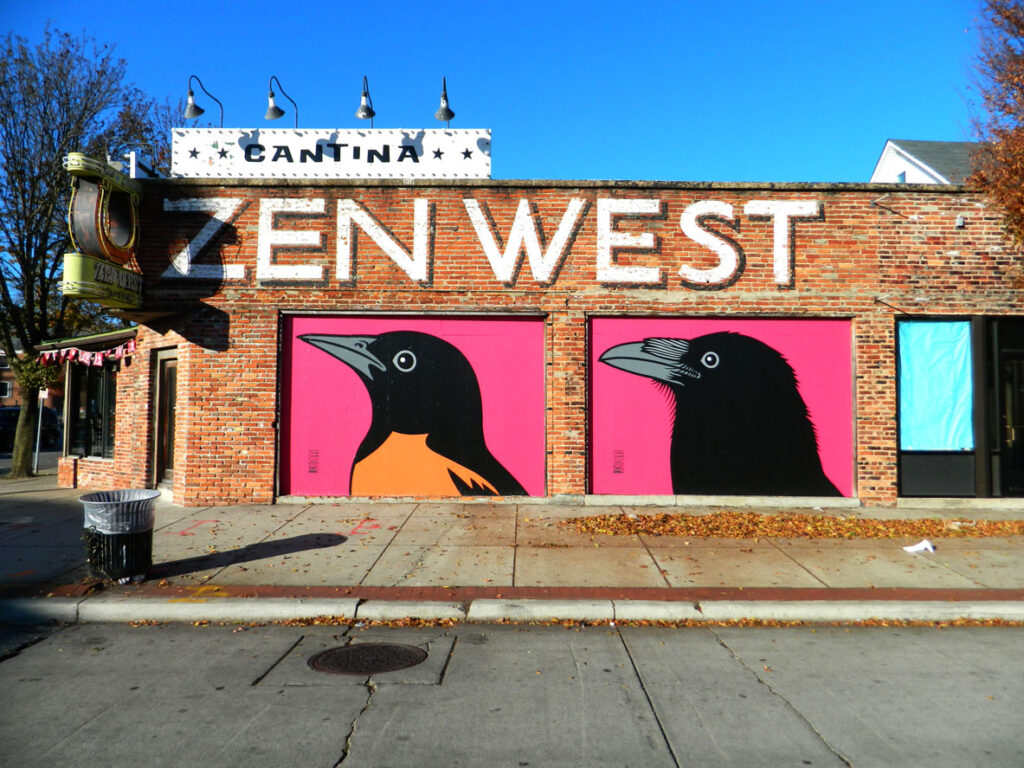
Baltimore Oriole
5916 York RdArtist: Iandry Randriamandroso
Baltimore Oriole, Maryland’s state bird and Baltimore’s favorite bird, is a beautiful golden orange bird with a shiny black head and black-and-white wings. The species’ rich, flute-like song is often heard throughout Baltimore, especially along forest edges, river banks, and open woods, like parks. Orioles eat insects and fruits. If you would like to attract this species to your home, place orange halves near your feeder or put out some grape jelly in an open dish. Baltimore oriole nest are an architectural beauty. The female weaves a sock-like nest, suspended across tree limbs with grass, horsehair, and artificial fibers. She takes 7 – 15 days to build the nest and will then lay 3 – 7 pale gray eggs that will hatch in two weeks’ time.
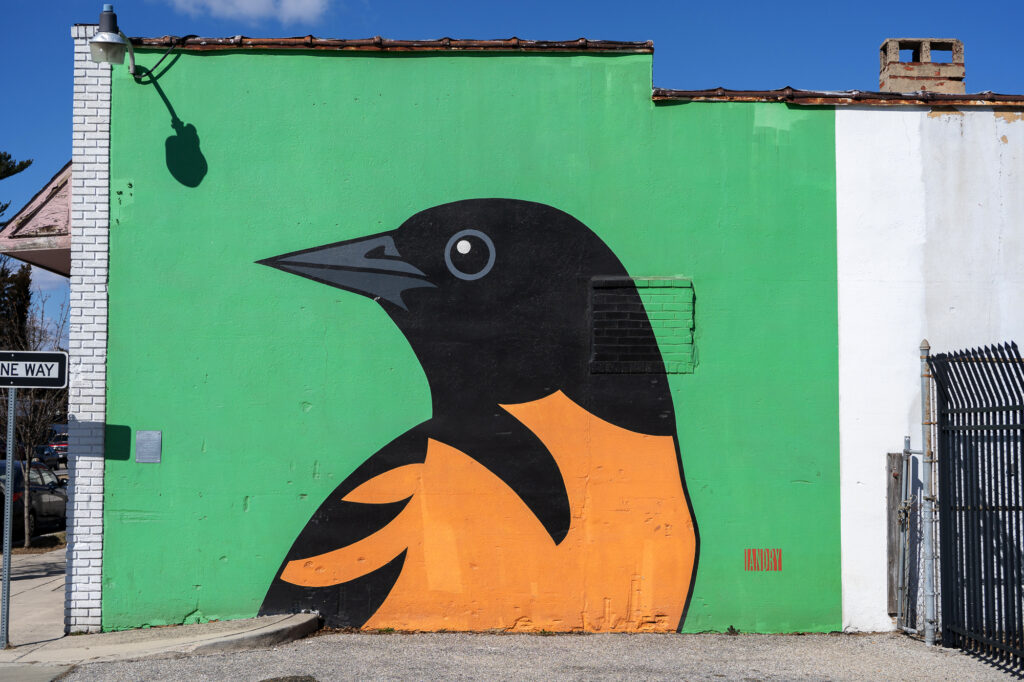
Baltimore Oriole
4333 York RdArtist: Iandry Randriamandroso
Baltimore Oriole, Maryland’s state bird and Baltimore’s favorite bird, is a beautiful golden orange bird with a shiny black head and black-and-white wings. The species’ rich, flute-like song is often heard throughout Baltimore, especially along forest edges, river banks, and open woods, like parks. Orioles eat insects and fruits. If you would like to attract this species to your home, place orange halves near your feeder or put out some grape jelly in an open dish. Baltimore oriole nest are an architectural beauty. The female weaves a sock-like nest, suspended across tree limbs with grass, horsehair, and artificial fibers. She takes 7 – 15 days to build the nest and will then lay 3 – 7 pale gray eggs that will hatch in two weeks’ time.
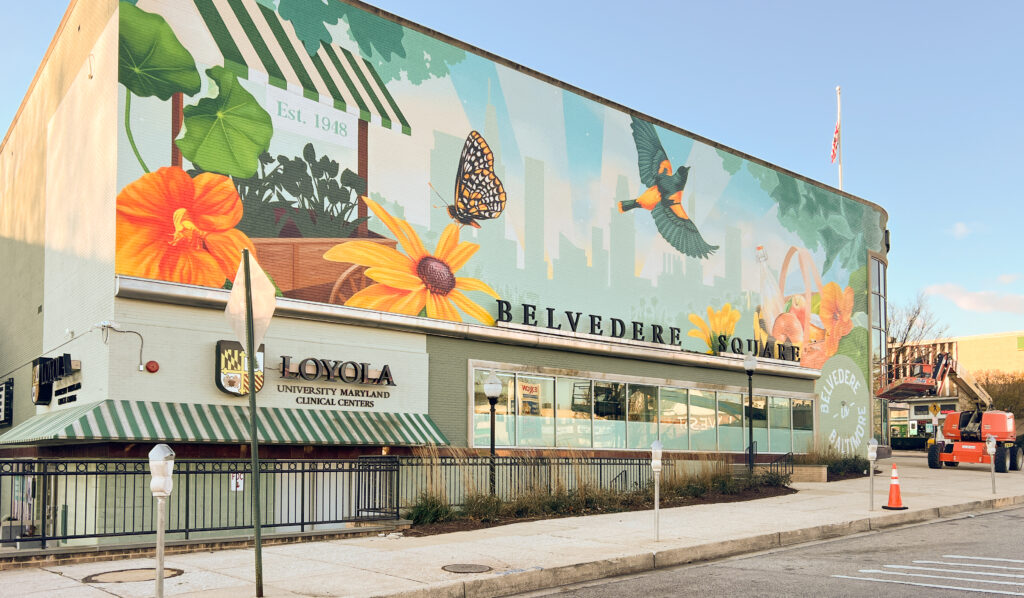
Belvedere is Baltimore
529 E. Belvedere AveArtist: Red Swan
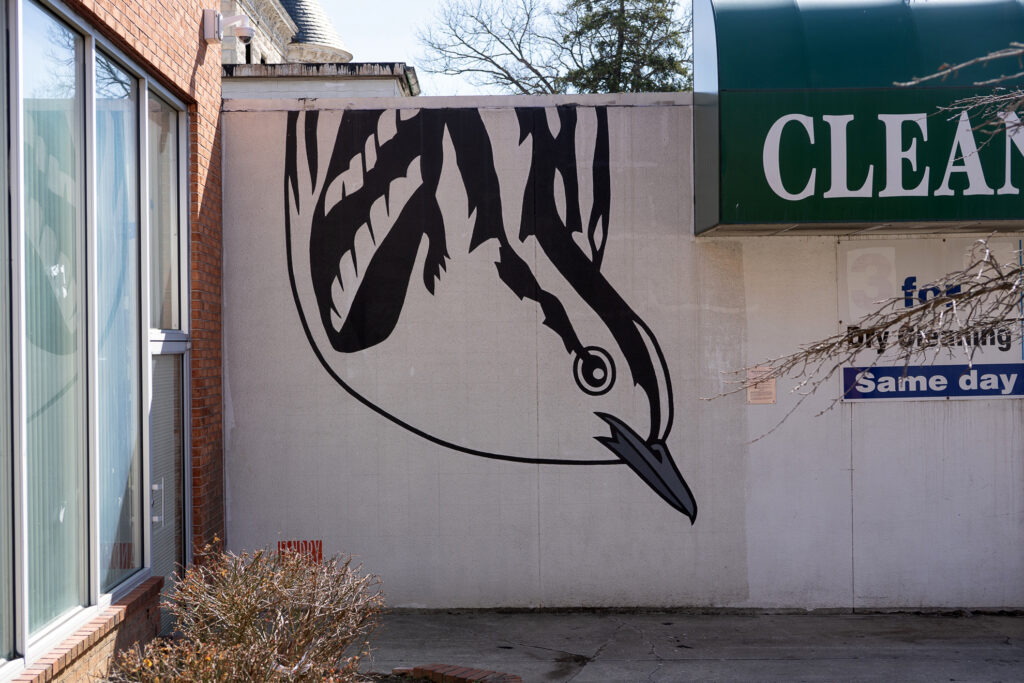
Black-&-White Warbler
5219 York RdArtist: Iandry Randriamandroso
Black-and-white Warblers are small, black and white striped birds that live in forests. Often seen creeping along tree branches, they eat a variety of insect larvae hidden in the wood, along with ants and beetles. They spend the winter months in Mexico and migrate up to Maryland to breed in the summer, by building well-hidden nests on the ground near tree trunks.
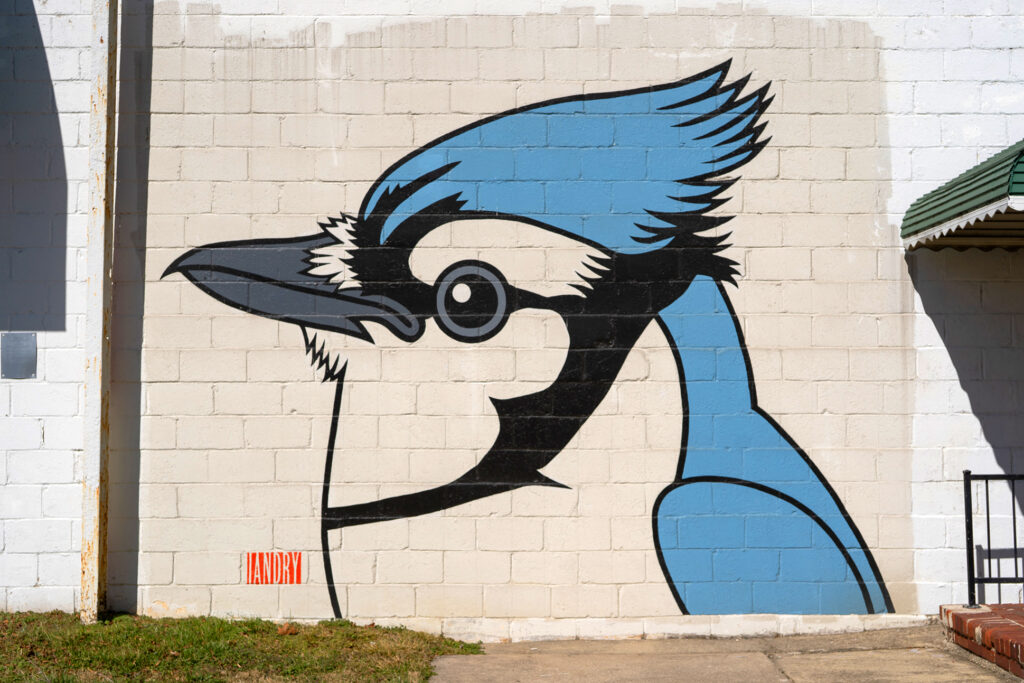
Blue Jay
5219 York RoadArtist: Iandry Randriamandroso
Blue Jays are the local noisy neighbors in wooded residential areas, with their loud jaaaaay calls that easily distinguish them. They are pale to bright blue and white birds that eat a variety of insects, nuts, and seeds. They also sometimes eat eggs from other birds’ nests and are aggressive at the local bird feeder. Blue Jay eggs are blue to light brown, within nests placed approximately 20 feet above ground in trees.
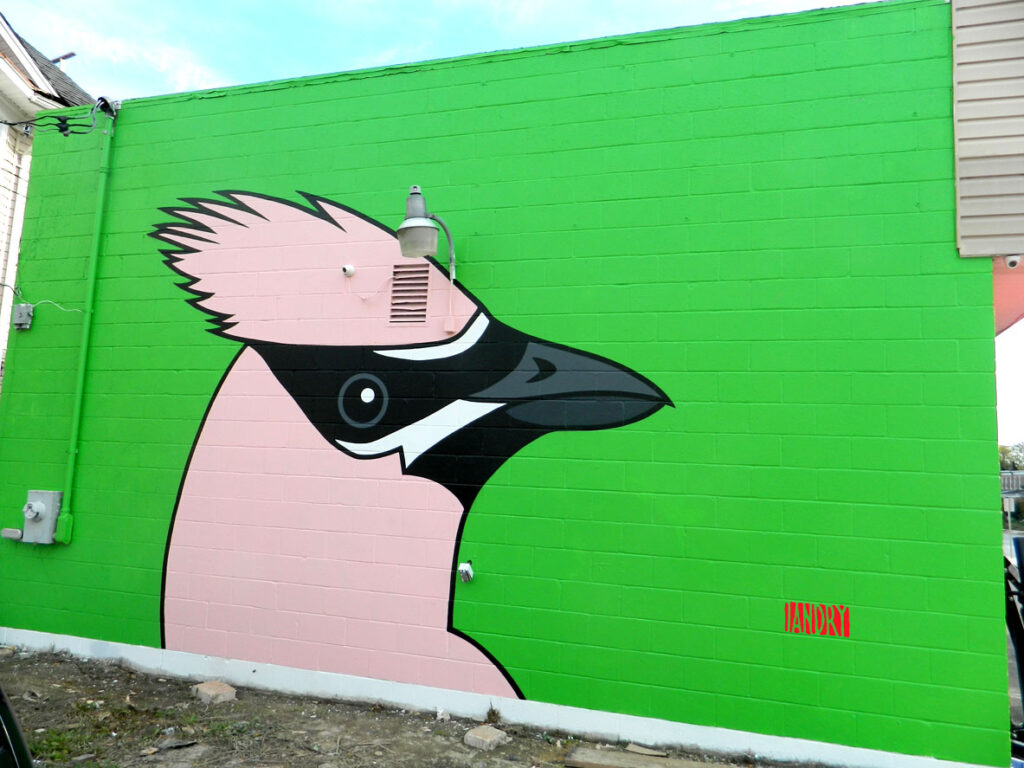
Cedar Waxwing
4811 York RdArtist: Iandry Randriamandroso
Cedar Waxwings are bold colored birds with rusty brown bodies, black face masks, and orange or yellow wax-tipped tails. They are often found in flocks, filling themselves with berries from a variety of plants, such as mulberry trees and honeysuckle shrubs. They are common in residential areas, staying in Maryland all year round.
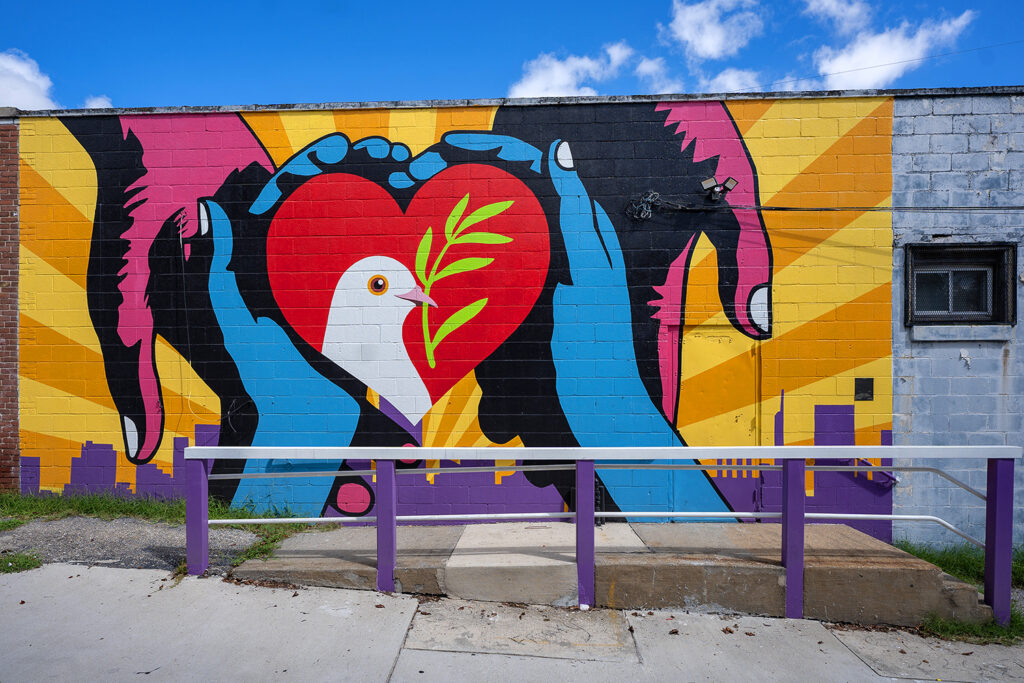
Elevate
4601 York RoadArtist: Iandry Randriamandroso

Govans
5627 York Rd
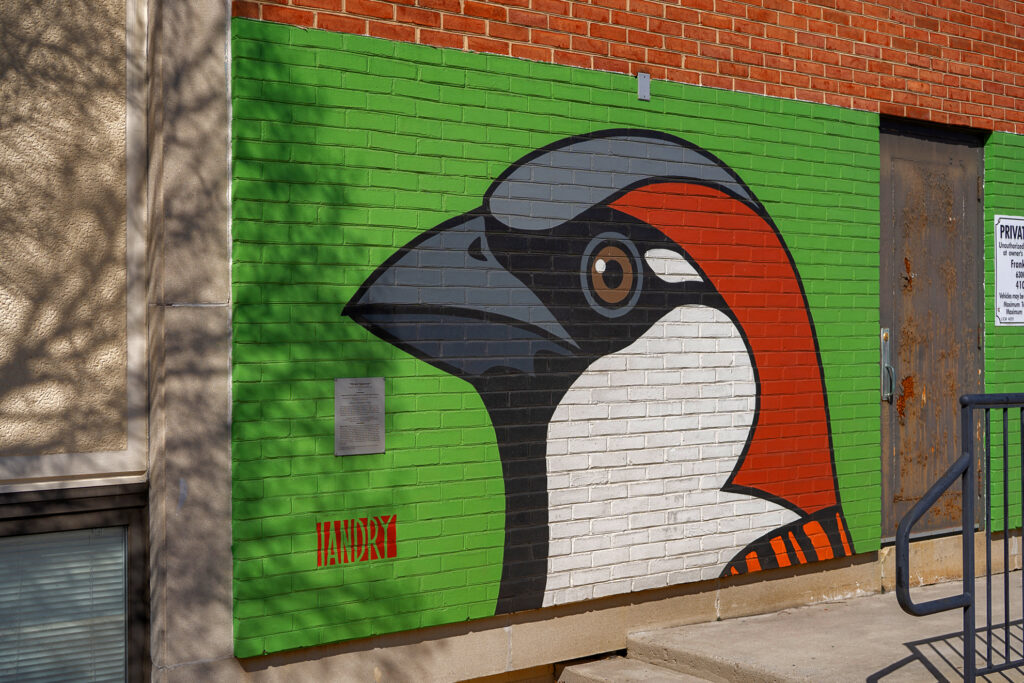
House Sparrow
5820 York RdArtist: Iandry Randriamandroso
House Sparrow is one of the most common bird species found in Baltimore, especially in the more built up locations. These small brown, gray, white, and black birds are usually found hopping and chirping along street corners and parking lots. Males have a dark splotch of black on their chests and rusty feathers on its head and back, while females are a dull brown and gray. This species was not always in Baltimore. House sparrows were introduced to Brooklyn, New York back in 1851 and have since found their way across North America from England. They prefer to live in cities, and often build their nests in buildings or overhanging fixtures, like streetlights and street signs.

Love
5857 York Rd

Raven
5916 York RdArtist: Iandry Randriamandroso
Ravens are massive black birds that look similar to crows, but with larger beaks, longer wings, and a thick, shaggy throat. This species prefers cooler open forested habitats in Canada and along the Western United States. Baltimore is only at the southern edge of this species’ range, but some ravens are seen in the city throughout the year. Ravens will eat almost anything they can get, from small mammals, eggs, scorpions, berries, and carrion. One of the smartest bird species, they have been known to use tools, like sticks, to get food out of tricky locations. They tend to nest in trees, on cliffs, and on human structures, like powerline towers and telephone poles.

Red-bellied Woodpecker
5017 York RdArtist: Iandry Randriamandroso
Red-bellied Woodpeckers are common woodpeckers found in wooded areas that have a red cap, black wings, and a warm beige belly. Their large black bill is used for drilling into dead wood to pull out insects and larvae with their barbed tongues. They also drill cavities inside dead trees to lay 2-6 eggs and raise their young over a month-long period.
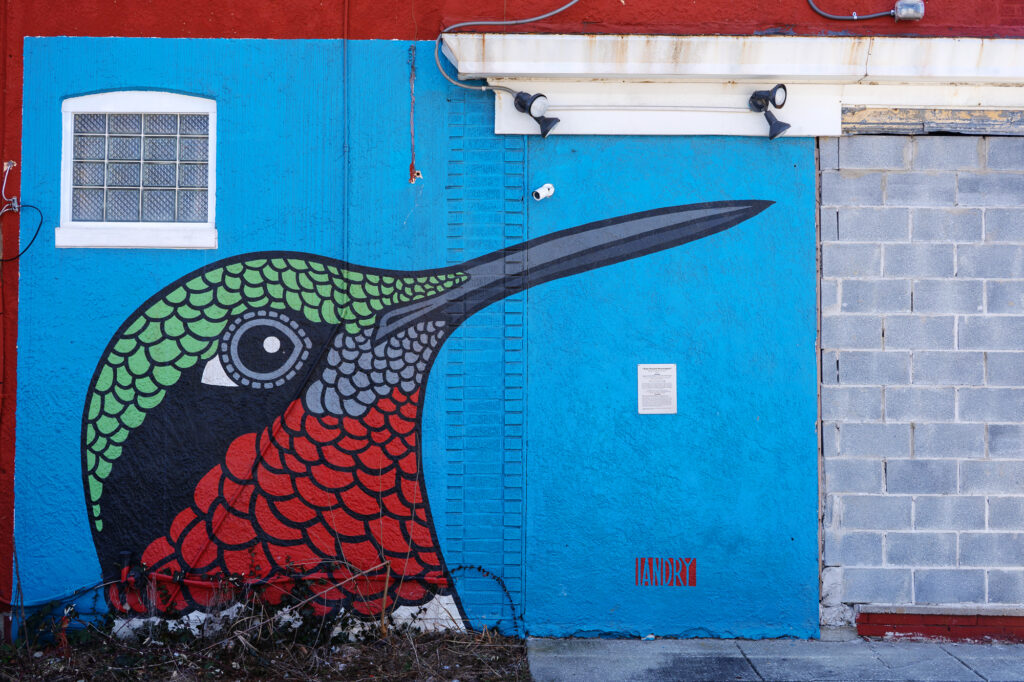
Ruby-throated Hummingbird
5723 York RdArtist: Iandry Randriamandroso
Ruby-throated Hummingbird is a beautiful bird that you wouldn’t forget if it visits your feeder. Weighing in at only 2 – 6 grams (approx. 0.1 oz), this tiny bird is metallic green with a gray, white belly. Males have an iridescent ruby red throat patch, while females lack this bejeweled feature. Their nests are the size of a large thimble, yet hold 1-3 tiny eggs! Even though ruby-throated hummingbirds breed in Baltimore, they travel to Mexico and Central America for the winter seasons. Before leaving for their migration, they gorge themselves on flower nectar and will visit hummingbird feeders filled with sugar water.

Together Govans
4300 York RoadArtist: Iandry Randriamandroso

Tufted Titmouse
5610 York RdArtist: Iandry Randriamandroso
Tufted Titmouse is a small gray bird with large, dark eyes and a mohawk-like crest that you often hear before you see. This little bird loudly exclaims “Peter! Peter! Peter!” in the breeding season. Closely related to the chickadee, this species prefers to eat seeds, especially from bird feeders, and will also eat berries, caterpillars, and spiders. Tufted titmice nest in cavities carved out of a tree, but they rely on woodpeckers to do all the carving work! They line their nests with moss, grass, and hair, sometimes plucked directly from mammals, and tend to have 3-9 young in each summer nesting season.